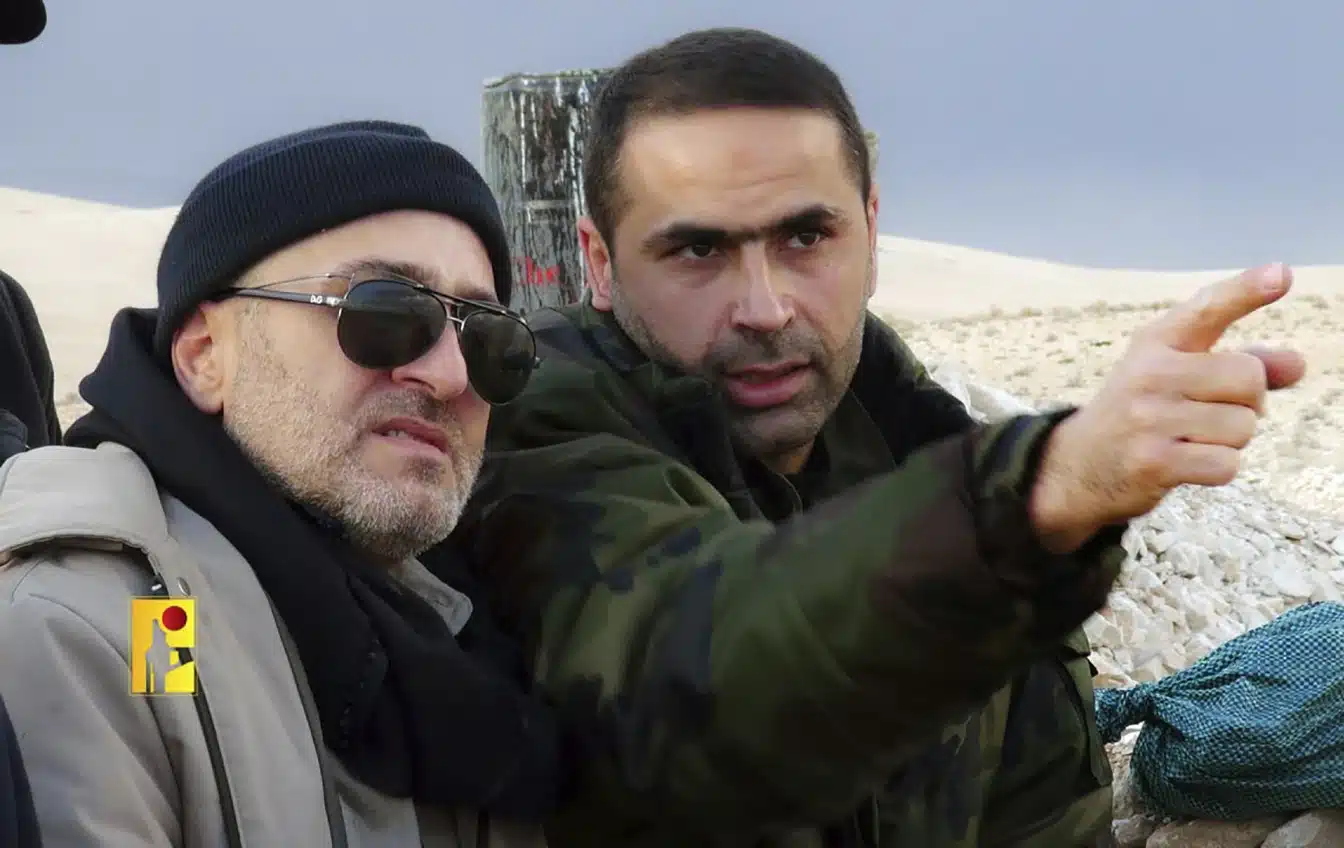BEIRUT — An elite Hezbollah leader was killed by an Israeli airstrike in southern Lebanon on Monday, the latest in a rising series of strikes along the border that has stoked worries of another Mideast conflict, even as the fighting in Gaza takes a toll on civilians.
According to a Lebanese security officer who spoke on the condition of anonymity to comply with laws, the hit on an SUV killed a leader in a hidden Hezbollah squad operating along the border. Hezbollah identified the killed fighter as Wissam al-Tawil, but no other information was provided.
He is the most senior fighter in the armed group to be killed since Hamas’ October 7 onslaught on southern Israel sparked an all-out war in Gaza and lower-intensity warfare between Israel and Hezbollah, which has increased since an Israeli strike killed a senior Hamas leader in Beirut last week.
Again in the region this week, U.S. Secretary of State Antony Blinken appears to be attempting to prevent a larger confrontation.
Israeli authorities predict the combat may last for months as the army attempts to demolish Hamas and return scores of hostages kidnapped during the terrorists’ October 7 onslaught.
The offensive has already killed over 23,000 Palestinians, wrecked significant areas of the Gaza Strip, displaced almost 85% of its 2.3 million citizens, and left a quarter of them facing hunger.
Israeli Strike Kills An Elite Hezbollah Commander In The Latest Escalation Linked To The War In Gaza
As the fighting intensified, medics, patients, and displaced people evacuated the major hospital in central Gaza, witnesses reported on Monday. Losing the institution would be another severe blow to the healthcare system, wrecked by three months of fighting.
Doctors Without Borders and other humanitarian organizations have recently withdrawn from Al-Aqsa Martyrs Hospital in Deir al-Balah, citing safety concerns. That sparked alarm among those sheltering there, prompting many to join the hundreds of thousands who fled south of the besieged area.
Tens of thousands of Palestinians have sought refuge in Gaza’s hospitals, which are trying to treat dozens of people injured in Israeli strikes every day. According to the United Nations humanitarian office, just 13 of Gaza’s 36 hospitals are partially operational.
Omar al-Darawi, an Al-Aqsa hospital staffer, stated that the facility had been struck several times recently. He stated that thousands of people fled after the assistance groups withdrew, while patients were concentrated on one level to be treated by the remaining physicians.
“We have large numbers of wounded who can’t move”, he went on to say. “They need special care, which is unavailable.”
Israeli Strike Kills An Elite Hezbollah Commander In The Latest Escalation Linked To The War In Gaza
Every day, more people are killed and injured as Israeli soldiers move through central Gaza, backed up by heavy bombings. According to Gaza’s Health Ministry, 249 Palestinians have died, and 510 have been injured in the last 24 hours.
World Health Organization officials who visited on Sunday observed “sickening scenes of people of all ages being treated on blood-streaked floors and in chaotic corridors,” said Tedros Adhanom Ghebreyesus, the U.N. agency’s director. “The bloodbath in Gaza must end.”
Thousands more Palestinians fled Deir al-Balah and refugee camps in central Gaza, travelling south along the coastal route to a region known as Muwasi, on the fringes of Rafah at Gaza’s southern end, where more than 1 million people had already assembled.
The United Nations Children’s Agency (UNICEF) reported that 90% of Gaza’s children under the age of two ate just bread and milk and that diarrhoea rates were on the rise.
“As the prospect of famine grows, hundreds of thousands more young children might become severely malnourished, with some at risk of death. “We cannot let that happen,” said Catherine Russell, UNICEF’s Executive Director.
The situation is even more terrible in northern Gaza, where Israeli forces closed off access to the remainder of the area in late October.
Entire neighbourhoods have been demolished, and most of the population has gone. Tens of thousands of people still suffer severe food and water shortages. The WHO announced late Sunday that it had been unable to transport supplies to northern Gaza in 12 days due to intense bombing and an inability to secure safe passage with the Israeli military.
Even there, Israel continues to attack what it refers to as extremist pockets.
According to Mahmoud Bassal, a spokesman for Gaza’s civil defence, an airstrike early Sunday destroyed a four-story residence housing displaced persons in the urban Jabaliya refugee camp, killing at least 70 people, including women and children. The Health Ministry, which has struggled to maintain operations in the north, did not provide an instant confirmation.
On Monday, search activities were still underway. Civil defence personnel shared a horrific video of the aftermath, with many victims spread among the ruins.
Israeli Strike Kills An Elite Hezbollah Commander In The Latest Escalation Linked To The War In Gaza
Jabaliya, which was created for Palestinian refugees from the 1948 conflict that preceded Israel’s establishment and is today a densely populated suburb, has endured weeks of heavy warfare.
According to the Health Ministry in Hamas-controlled Gaza, more than 23,000 Palestinians have been killed; nearly two-thirds of them are women and children, and more than 58,000 have been injured since the conflict began. The death toll shows little distinction between combatants and civilians.
Israel blames Hamas for civilian losses since the group operates in densely populated residential areas, although the military rarely discusses the intended target in strikes that kill a large number of civilians. The military claims to have killed 8,000 militants without giving evidence and that 176 of its soldiers were killed during the attack.
Hezbollah began launching missiles quickly after Hamas’ October 7 onslaught, claiming it was to relieve pressure on Gaza. That day, Hamas and other militants killed over 1,200 people in southern Israel, the majority of whom were civilians, and kidnapped roughly 250 individuals, more than 100 of whom were released during a cease-fire in November.
Nearly 200 Lebanese people have been murdered in exchanges with Israel, the majority of whom are militants but also include 20 civilians. Five civilians and 12 troops were murdered along Israel’s border with Lebanon, while more than 150 were injured. Tens of thousands of people on both sides of the border have been displaced from their homes.
SOURCE – (AP)









